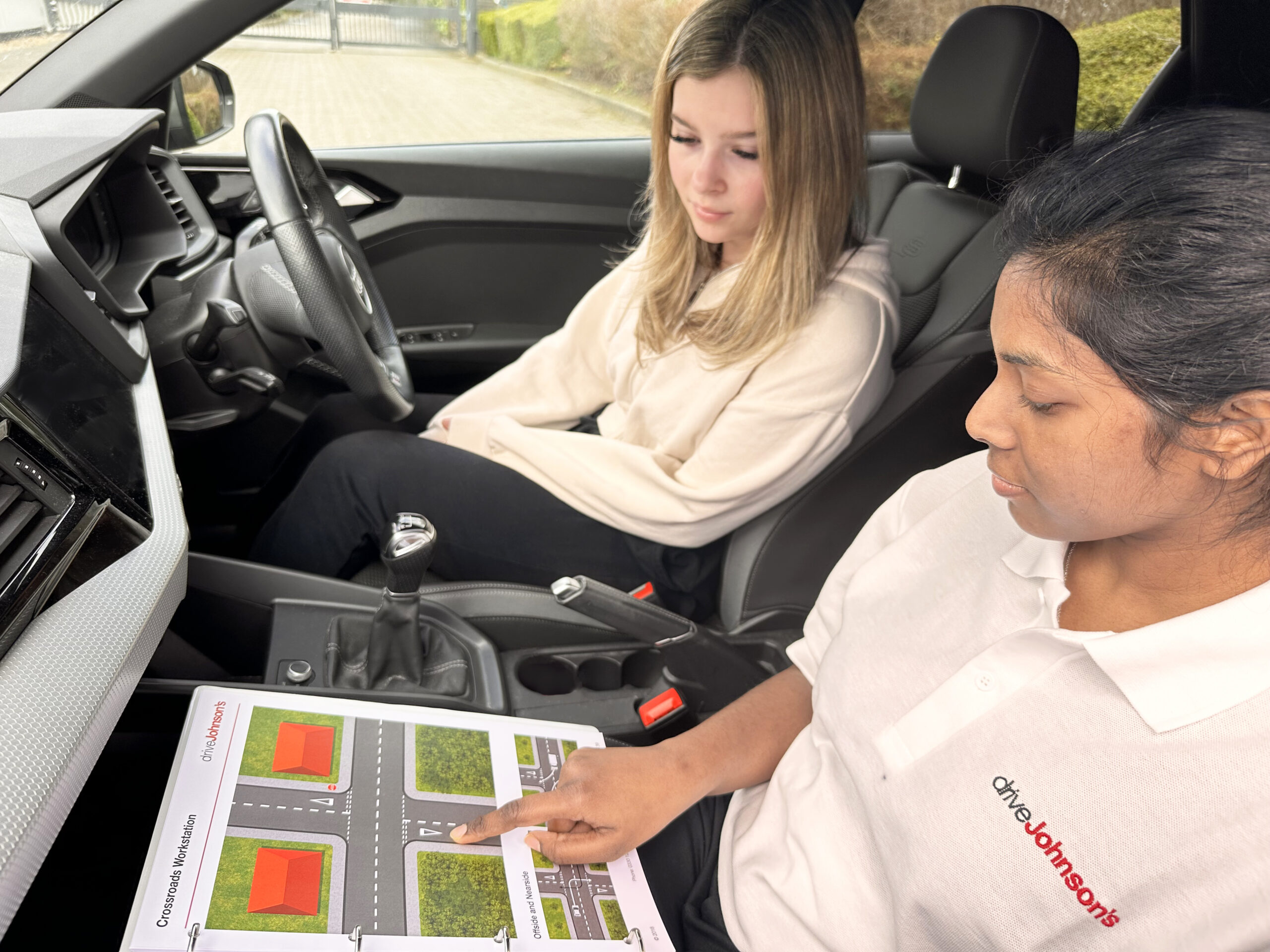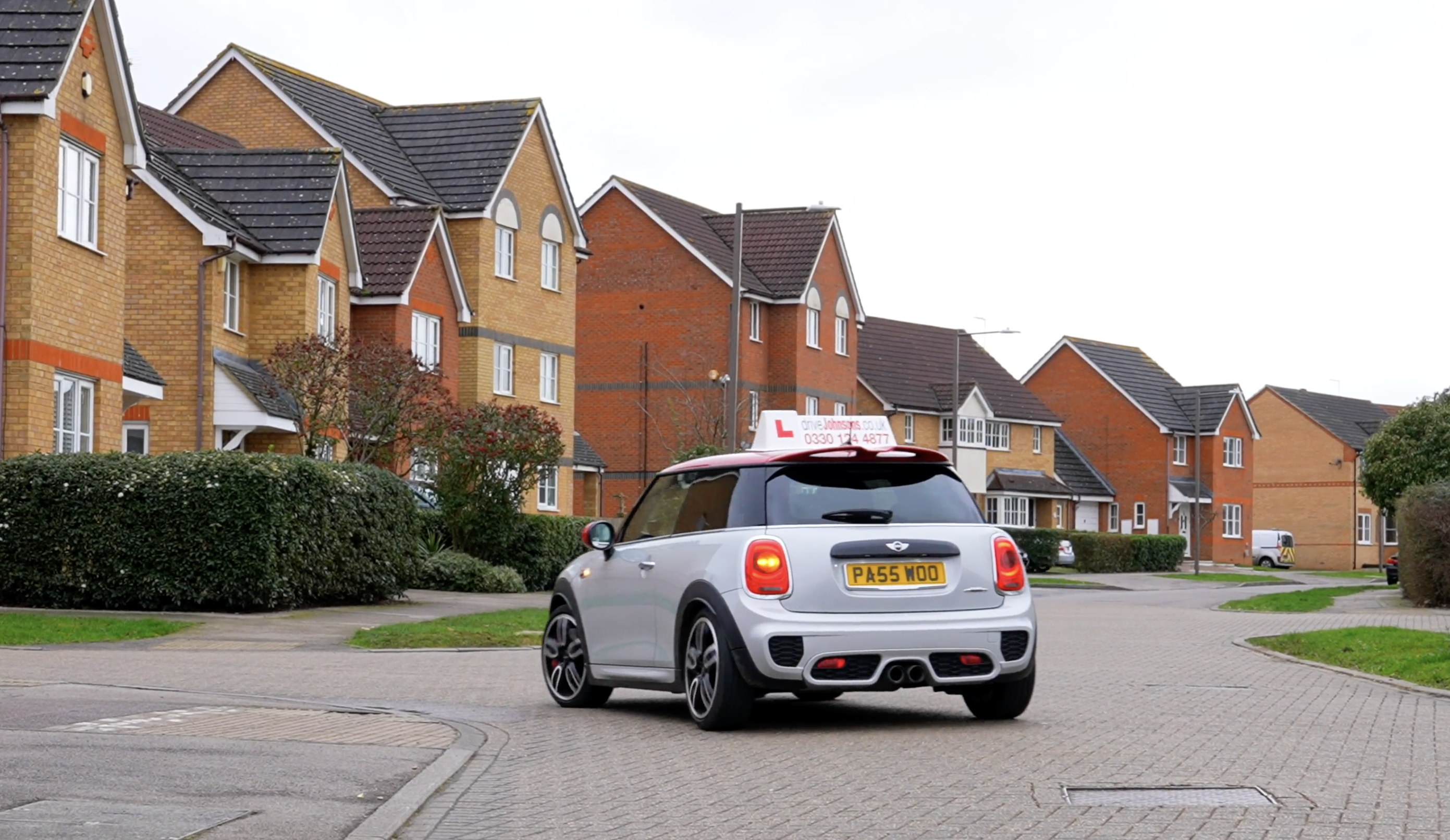What happens on your first driving lesson?
13th July 2015 | 5 minute read- Home
- Learning Centre
- FAQ
- General Driving FAQs
- What happens on your first driving lesson?
If you’ve booked your first driving lesson or are currently considering your options, you’re probably wondering what happens on your first driving lesson. We’re here to help and have outlined what generally happens from start to end on your first driving lesson.
What to expect on your first driving lesson
It’s a common question that some of you may have. You might have an idea of what to expect on your first driving lesson; others take a guess or go on what someone else has said in the past.
There are myths that you can spend the whole one or two-hour lesson stationary and the car doesn’t move. We have heard of companies out there that do that, but it’s not something we practice at driveJohnson’s.
Our goal at driveJohnson’s is to get you driving as quickly as possible on your first lesson without compromising your safety.
Watch our explainer video to see what happens during your first driving lesson.
Here’s generally what happens from the beginning to the end of the first hour:
Eyesight test and checking provisional licence – You will be asked to read a number plate which will be approximately 20.5 meters away (5 car lengths). Once your eyesight has been checked, your instructor will look at your provisional licence and take down some details, including your driver number. Please don’t forget to bring your provisional licence with you during your first lesson. If you don’t have it with you, then your first lesson won’t go ahead.
Quick Q&A – Your instructor will spend 2-3 minutes asking questions and finding out your previous experience. Although you may not have driven before, you may have experience with other vehicles such as a moped, go-karting, farm vehicles or you may have practiced with family/friends. Some pupils getting into the car for the first time know absolutely nothing and others have some knowledge, like which pedal is which, basic controls like the handbrake, and how to adjust the mirrors. By quickly finding out your prior knowledge at the beginning, your instructor can pitch their level of instruction accordingly. Your instructor should also ask you about your health and if you have any medical conditions that they should know about.
Drive to site – Depending on where you live, your instructor may have to drive you to a quieter area. It’s important that you start in an area free from activity, like approaching vehicles and busy junctions. This may take 5-10 minutes. Your instructor will take you to the nearest suitable place.
Commentary drive – On the way to a suitable place, your instructor may talk you through what they are doing. For example, they may talk about changing gear if you are learning in manual, turning the steering wheel, the use of mirrors, and more.
Controls – Once your instructor has found a suitable place, it’s important you know the controls of the vehicle. Little things, like adjusting the seat and mirrors, vary in every car.

Knowing which pedal is which, where the direction indicators are, and how to adjust the seat – these are all important need to knows before you start trying to move the car. These are very simple things for someone who can drive, but many pupils don’t know this during their first lesson. It’s important to lay the foundations correctly so that there is no panic later when the car is moving. A controls lesson can take up to 20 minutes. Depending on your prior knowledge, it can be shortened to just 5-10 minutes too.
Moving off and stopping – Your instructor will need to brief you on what to do first. This can take up to 5 minutes, depending on your prior knowledge and experience. After the briefing, you will practice moving off and stopping in first gear. Once you are comfortable exceeding 5-10mph, your instructor will encourage you to change into 2nd and possibly 3rd gear too. Because the foundations were laid earlier in the controls, the need to stop and go through the gears, for example, is unnecessary. You can expect at least 5-10 moving offs and stops in your first lesson. To do this many ‘moving offs’, a long stretch of straight road is required; this is why finding a suitable location is important at the beginning so that you get the best practice in your lesson.
If you are doing a one-hour lesson, then you can expect your lesson to finish by moving off and stopping. Visit the debrief and feedback later down the page if you are doing a one-hour lesson.
If you are doing a two-hour lesson, then you will move on to turning left and right, and hopefully more.
Turning left and right from a major road into a minor road – Don’t be surprised if your instructor moves you onto this subject fairly quickly. What they often try to do is master the moving off and stopping and steering in the same lesson. The reason for this is that it’s hard to find very long empty roads, especially if you are having driving lessons in London. Many instructors will find a quiet housing estate where you can finish off your moving and stopping and then help you to master how to turn left and how to turn right.

T-Junctions – Sometimes your instructor will even show you how to do T-Junctions. Don’t worry if you are practicing these: that’s a sign you are having a really good lesson. Also, your instructor will do their best to find you quiet T-Junctions so that you can build up your confidence.
Drive back and debrief – Depending on where you live or want to be dropped off, your instructor may have to drive back, in the interests of safety and finishing your lesson on time. On the way back, your instructor will go over the lesson and possibly do a bit more commentary on what he/she is doing whilst driving you to your drop-off point.
Feedback and Rebook – Your instructor will ask you questions at the end about your performance, also offering their feedback. They will discuss your strengths and weaknesses too. Before leaving, your instructor will offer to book you in for your next lesson.






